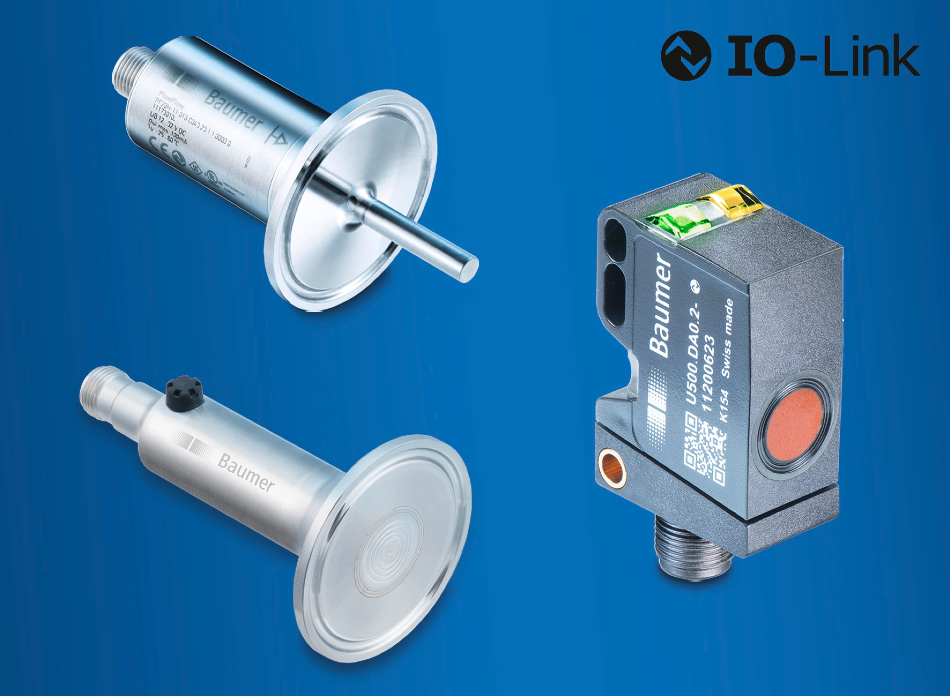Today’s process and control sensors are benefitting from important technical advances enabling users to explore and develop new control concepts, especially for automation applications. IO-Link is a key example of this and the introduction of a new range of IO-Link sensors with Dual Channel capability is an important development from sensing and instrumentation specialists BAUMER.

While IO-Link sensors transfer signals via pin 4 and offer the flexibility of being used either for switching or bi-directional IO-Link communication, these Dual Channel sensors go even further by enabling the transmission of additional signals parallel to the IO-Link channel. Basically, they enable users to utilise two channels simultaneously, essentially more information, more feedback and faster.
Their pin 2 is assigned with a sensor-specific signal, for example like switching or input or output. This allows for different control concepts to be enabled because by using the Dual Channel as a leading process surveillance, frees up the IO-Link channel for other tasks.
From position, to distance or process sensors, Baumer offers a wide range of IO-Link sensors with Dual Channel which are designed in a way that means users can explore and profit from different automation concepts. This empowers them to be able to switch from analogue to digital regulating, or they can use both channels for more data at a time.
Different control concepts can be explored and enabled because using the Dual Channel as a leading process surveillance tool, frees up the IO-Link channel for other tasks. In some applications the latter can also be used for process data, so the sensor offers two measurement channels, in one device.
However, the IO-Link channel is still capable of transferring cyclical process data and acyclical data at the same time because the data is transmitted separately which means it’s possible to get at least the diagnostic data in parallel to process data. Exchanging parameter data during measurement is dependent on the specifics of the application.
Alternatively, users can shift to using the digital IO-Link channel as the leading regulating output, or the Dual Channel may be operated for a second process valve, or a direct switch for example to an actuator. The latter is interesting for real-time applications that need direct switching without being dependent on cycle times in higher systems. This has the added benefit of relieving the control system.
Either way, IO-Link sensors with Dual Channel offer all the IO-Link benefits even if the automation system is not yet ready for digital communication. Users may continue to utilise conventional automation principles simultaneously to the digital IO-Link communication. With regard to commissioning, or receipt of changes, IO-Link is always valuable in helping with fast and easy parameterisation or access to secondary data, while the Dual Channel capability makes sensors ready to switch from one automation principle to another at any time.
Source: https://www.baumer.com/us/en/